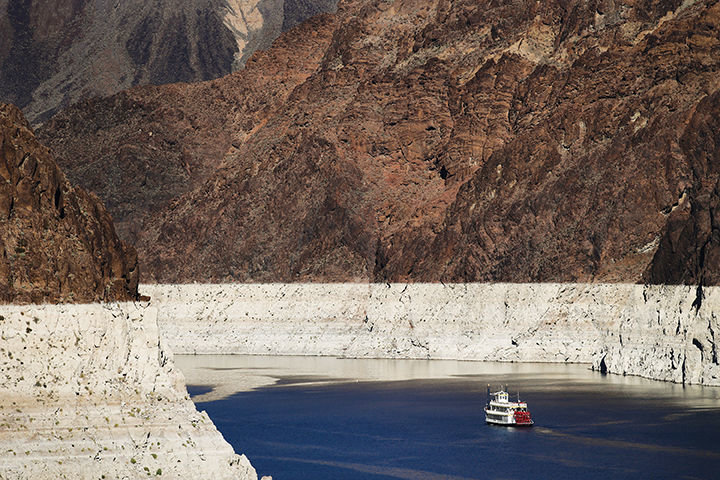
Amid punishing drought, federal water managers projected Tuesday that — by a very narrow margin— the crucial Lake Mead reservoir on the Colorado River won't have enough water to make full deliveries to Nevada and Arizona in 2018.
A 24-month projection, issued on a day the largest reservoir on the closely controlled and monitored river was 36 percent full, showed the surface level of the lake behind Hoover Dam is expected to clear the trigger point this year to avoid a shortage declaration in 2017.
The margin is expected to be just under 4 feet, or almost 228 billion gallons of water. Mandatory shortages begin to take effect once levels dip below 1,075 feet.
For 2018, the U.S. Bureau of Reclamation projects missing the mark by under a foot, which would trigger a shortage declaration, cuts to Arizona's water allocation by 11.4 percent, and cuts to Nevada's water flow by 4.3 percent.
That would be enough water to serve more than 600,000 homes a year in Arizona, and about 26,000 in Nevada.
In Havasu, those initial shortages probably won't have a noticeable effect. Mayor Mark Nexsen said since the city as a whole currently uses about half of its water allocations, the initial 11.4 percent reduction possibly coming in 2018 wouldn't impede Havasu citizens' current water use habits.
"If they go on to declare a stage two [shortage], we will have a water shortage plan we'll be implementing," Nexsen said. Those plans have been in place and in the city code for at least five years already. They target outdoor landscaping and encourage high efficiency home appliances.
Conservationists in the region said a close call should be a wake-up to water-users to be careful.
"We avoided a shortage by the skin of our teeth," said Bart Miller, of Western Resource Advocates. "If no action is taken ... a shortage declaration is not far off. We need to step up water conservation, reuse and innovative water management."
Public water managers in Nevada, California and Arizona said they hoped the shortage projection wasn't a certainty.
Most experts have pointed to swaps and storage programs that have propped up the lake level by reducing the amount of water drawn for use elsewhere.
Lake Havasu City's Water Resources Manager Doyle Wilson said a rebate program through the city is a good place for locals to start conserving water before a shortage is declared. Applicants to the program can receive water friendly toilets, water pumps, dishwashers and washing machines provided by grant money the city receives.
Wilson said it's also important to note the results announced Tuesday could change before the next annual measurement. Another round of data will be collected next spring, meaning he'll be hoping this winter is a wet one.



Reader Comments
to our Newsletter